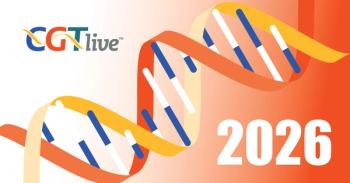
Managing CAR T Therapy Toxicities With Standardized Care Guidelines
David G. Maloney, MD, PhD, covered the importance of standardized criteria in managing CRS and ICANS with CAR T therapy.
This content originally appeared on our sister site,
Improving management strategies for cytokine release syndrome (CRS) and immune effector cell-associated neurotoxicity syndrome (ICANS) has become more important as more chimeric antigen receptor T (CAR T)-cell therapies are approved for treating hematologic malignancies. Newly standardized grading criteria for these strategies have been developed to more appropriately utilize CAR T therapies.
David G. Maloney, MD, PhD, professor, Clinical Research Division and Leonard and Norma Klorfine Endowed Chair for Clinical Research, Fred Hutchinson Cancer Research Center, and medical director, Cellular Immunotherapy, Seattle Cancer Care Alliance, and professor of medicine, Division of Oncology, University of Washington School of Medicine, discussed these criteria in a virtual presentation given during the
“Real-world evidence suggests that we have improved toxicity management from the original clinical trials, probably because of early treatment and patient selection. Fortunately, most of these toxicities resolve, but product selection is associated with different rates of toxicity. It is important to consider this,” Maloney said.
Currently, FDA approvals for CAR T-cell therapies exist in aggressive non-Hodgkin lymphoma (NHL) with tisagenlecleucel (Kymriah), axicabtagene ciloleucel (axi-cel; Yescarta), and lisocabtagene maraleucel (liso-cel; Breyanzi), mantle cell lymphoma with brexucabtagene autoleucel (Tecartus), follicular lymphoma with axi-cel, pediatric or adolescent/young adult acute lymphoblastic leukemia with tisagenlecleucel, and multiple myeloma with idecabtagene vicleucel (ide-cel; Abecma).
“Each of these products is associated with a somewhat unique toxicity profile and they have their own REMS [Risk Evaluation and Mitigation Strategy] programs with the FDA, which makes the management of these toxicities somewhat challenging,” Maloney said.
Regarding the CD19-directed CAR T-cell therapies approved for use in aggressive NHL, treatment-related toxicities consist of CD19-independent events, such as chemotherapy-related toxicities, infection, anaphylaxis, recombinant lentivirus, and transformation, and CD19-dependent events, such as CRS, ICANS, B-cell depletion/infection, and tumor lysis syndrome.
Although fever is the defining characteristic of CRS, other associated complications can include hypotension, capillary leak, coagulopathy, marrow dysfunction, multiorgan failure, hypoxia, and hemophagocytic lymphohistiocytosis–like syndrome. ICANS can comprise headache, speech disturbances, delirium, seizures, focal deficits, and cerebral edema.
“There is an overlap between CRS and neurologic toxicity. Patients with really low-grade CRS often don’t have neurotoxicity, whereas patients with very severe CRS can often have very severe neurologic toxicity,” Maloney said.
Although tisagenlecleucel, axi-cel, and liso-cel are relatively similar products, differences in co-stimulatory domains elicit some differences regarding the onset and speed of CRS and ICANS, Maloney explained. However, no randomized trials comparing the therapies have been conducted and the pivotal trials utilized different grading systems for toxicity.
To standardize grading, the American Society for Transplantation and Cellular Therapy (ASTCT) set forth consensus grading criteria for CRS and ICANS.2
Both CRS and ICANS are graded 1 through 4 and overall grade is determined by the worst parameter. Regarding CRS, all grades feature a fever of 38 degrees Celsius or higher. Grade 1 CRS is fever only, with grade 2 through 4 featuring increasing severity of hypotension and/or hypoxia.
“The CRS grade is largely determined by the supportive strategies that are necessary to treat and support the patients,” said Maloney.
ICANS grading is determined by Immune Effector Cell-Associated Encephalopathy (ICE) score, Cornell Assessment of Pediatric Delirium score, depressed level of consciousness, seizure, motor findings, and elevated intracranial pressure/cerebral edema.
Both grading systems indicate that resolution of CRS or ICANS occurs when signs attributing to grading are no longer apparent.
Notably, CRS and ICANS are almost always reversible, but ICANS typically presents later than CRS, Maloney explained. Additionally, CAR T-cell counts in the blood tend to follow a crescendo-decrescendo pattern.
As such, increased proliferation of CAR T cells through factors, such as tumor burden, antigen escape, more concentrated infusion of CAR T cells, and the addition of fludarabine to cyclophosphamide-based lymphodepleting chemotherapy, is associated with a greater pre-treatment risk of severe CRS and ICANS. Additionally, severe CRS can lead to CAR T-cell expansion.
“CAR T-cell proliferation and peak count are associated with both response and toxicity,” Maloney said. “Earlier intervention is often considered in patients with high pre-treatment risk and in frail patients with pre-existing comorbidities.”
Earlier intervention should also be considered for patients with high post-infusion risk, including those with early or rapid progression of clinical toxicity, because they are at risk of more severe CRS and ICANS.
As the field develops a greater understanding of CAR T-cell therapy, management strategies for CRS and ICANS are improving, although they still vary widely between institutional practices, Maloney said.
“The goal of treatment of CRS and ICANS is to control these severe acute toxicities and prevent persistent toxicities while waiting for resolution of CRS or ICANS, and to avoid impairment of anti-tumor activity,” Maloney said.
Ultimately, general management strategies for CRS and ICANS include admittance to an intensive care unit for any-grade toxicity, investigation/exclusion of other etiologies, monitoring of vitals, ICE score, daily labs, and imaging if indicated, use of supportive care, and integration of immune modulation therapies if needed.
Supportive care measures include cooling, acetaminophen, antibiotics, granulocyte colony–stimulating factor, transfusions, fluids, oxygen, seizure prophylaxis, vasopressors, airway protection, and ventilation. Immune modulation options that interrupt the cytokine cascade include tocilizumab (Actemra), which is FDA approved to treat CAR T-cell therapy–induced severe or life-threatening CRS, as well as siltuximab (Sylvant) and anakinra (Kineret). Corticosteroids are also utilized for immune modulation.
“CRS is not the only cause of fever, and ICANS [is] not the only cause of encephalopathy in these patients. Always consider the differential diagnosis to avoid a disaster,” Maloney noted.
Additional considerations, such as risk before and after infusion, stability of CRS components, age, variations in clinical trial designs, differences in CAR T-cell constructs, and variations in institutional practices can influence one’s interpretation of the CRS management guidelines, Maloney added.
Prolonged cytopenias and hypogammaglobulinemia are also frequently seen with CAR T-cell therapy, Maloney said.
Prolonged cytopenia that last more than 30 days post-infusion is observed in more than 30% of patients across approved CAR T-cell therapies. Notably, cytopenias are more frequent and more severe in patients with high-grade CRS, and treatment options include transfusion support, autoimmune processes, and transplant in rare cases.
Hypogammaglobulinemia is an on-target toxicity that arises from the ongoing elimination of CD19 B cells so long as functional CAR T cells are present. Patients with low immunoglobulin G (IgG) at presentation are more likely to develop hypogammaglobulinemia, but a minority of patients with normal IgG at infusion will require ongoing intravenous immune globulin support, which is suggested for patients with IgG less than 400 mg/dL.
Notably, patients who receive CAR T-cell therapy require ongoing follow-up for second malignancies and potential genetic risks from therapy, concluded Maloney.
References
1. Maloney D. Management of CAR-T toxicities. Presented at: 2021 Pan Pacific Lymphoma Conference; August 9-13, 2021; Big Island, HI. https://bit.ly/3ABmu04 .
2. Lee DW, Santomasso BD, Locke FL, et al. ASTCT consensus grading for cytokine release syndrome and neurologic toxicity associated with immune effector cells. Biol Blood Marrow Transplant. 2019;25(4):625-638. doi:10.1016/j.bbmt.2018.12.758
Newsletter
Stay at the forefront of cutting-edge science with CGT—your direct line to expert insights, breakthrough data, and real-time coverage of the latest advancements in cell and gene therapy.






























